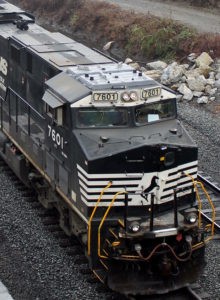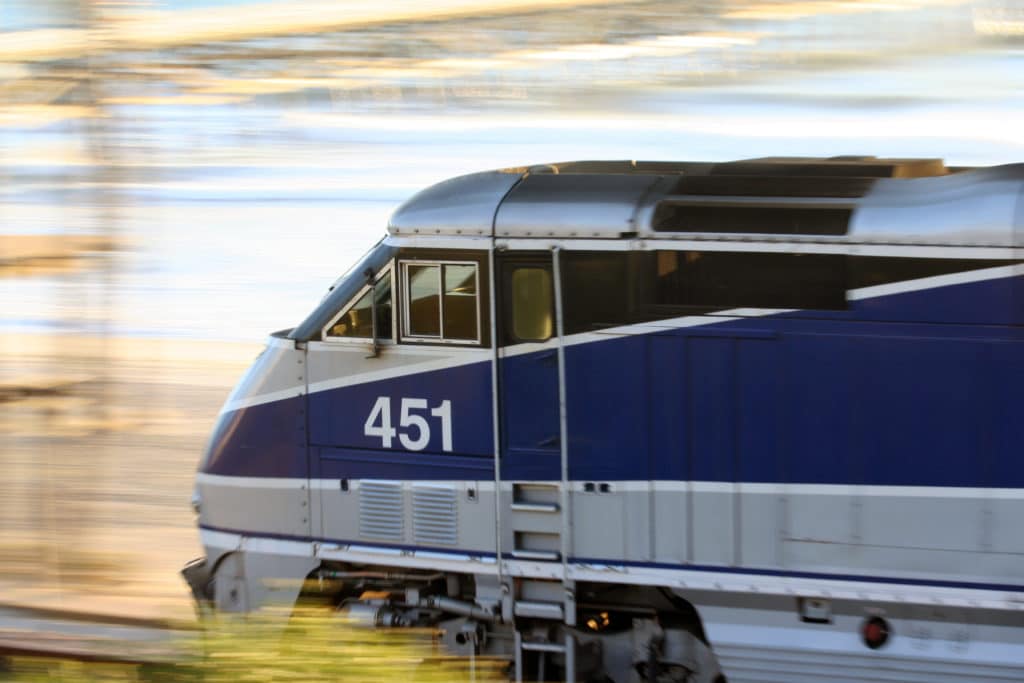How rail antennas and train antennas solve wireless communications challenges
The transit and rail industry faces significant command, control, and communications challenges. Multi-polarized antennas that reduce signal degradation and support consistent voice and data communications are an important part of the solution. In this white paper from MP Antenna, you’ll learn how rail antennas and transit antennas for onboard, outdoor, and mobile applications support positive train control (PTC), live video streaming, secure communications, and passenger expectations for reliable wireless connectivity.
In the United States, the Federal Railroad Administration (FRA) requires PTC for Class I freight haulers, inter-city passenger service, and many commuter trains. PTC supports scheduling and maintenance, but is especially important for accident prevention and rail safety. By monitoring data about speed, operator awareness, and brake and engine performance, PTC can help to prevent derailments such as the May 12, 2015 Amtrak crash in Philadelphia that killed 8 passengers and crew members.

PTC isn’t a single piece of equipment. Rather, it’s a digital data network that includes global positioning system (GPS) satellites and systems, computers and controllers, throttle-brake interfaces, radios, control devices, and multiple antennas. Onboard the locomotive, the core PTC module collects operational data, bundles it with the train’s location, and transmits this information to a control center. GPS technology helps track the train’s location and supports both risk identification and risk mitigation.
The 2015 Philadelphia train derailment is particularly instructive. When the Amtrak Northeast Regional derailed, the train was traveling at 102 mph in a 50 mph zone of curved tracks. Determining the train’s speed and location helped the National Transportation Safety Board (NTSB) with its subsequent investigation, but the absence of PTC on this part of track was critical. As NTSB officials explained, automatic train control could have limited the speed of the Amtrak train before it reached the curve.
Greater security onboard passenger trains can also save lives. In August 2015, a gunman on a high-speed train traveling from Amsterdam to Paris opened fire on passengers, wounding two people before being subdued by three American tourists. One of the Americans filmed the scene in the carriage moments after the suspect was subdued. In the United States, passenger lines such as New York’s Metro-North and Long Island railroads plan to install cameras on cars to deter crime and assist law enforcement.
Real-time video surveillance is also strengthening security and fleet efficiency in the transit industry. In Regina, Saskatchewan, Canada, video footage from bus cameras has helped police to solve crimes and investigate driver assaults and incidents. Since installing several video cameras as part of a pilot program in 2012, Regina Transit has reduced the number of assaults and crimes onboard city buses. Video surveillance also supports a reduction in false injury claims, and provides protection against litigation.
PTC technology and real time video surveillance are powerful tools, but even they can’t prevent accidents or crimes if there’s a communications breakdown. Every wireless component must work reliably, and that includes both the trackside and locomotive-mounted antennas. The trackside antennas receive operational and locational data from trains and relay this information to control centers. GPS-enabled, locomotive-mounted antennas receive location data via satellite. This information is then transmitted to a core PTC module and combined with operational data.
Meeting Rail and Transit Requirements
Understanding how PTC works clarifies the importance of antennas to rail and transit communications. With standard antenna technology, however, line-of-sight (LOS) paths can be disturbed by weather conditions and physical obstructions that cause reflectivity, multi-path distortions, absorption, and phasing. Multi-polarized antennas improve wireless communications, but these non-line of sight (NLOS) antennas must be built to handle the specific challenges of the rail and transit industry.
Functionally, locomotive-mounted rail antennas need to provide coverage in outdoor environments where high obstructions such as metal poles and bridges can cause reflection cancellation. Mechanically, these vehicle-mounted antennas must be robust enough to withstand heavy vibrations, extreme outdoor temperatures, and the ingress of dust, wind, and water. Antennas that support reliable rooftop attachment are also essential.
Like other locomotive-based antennas, rooftop-mounted units may face significant radio frequency interference (RFI). Locomotive engines and onboard motors generate RF noise. Other antennas, especially those operating in the dedicated 220-MHz band for rail, also need appropriate filtering. By minimizing interference, maximizing throughput, and providing signal redundancy, locomotive-based antennas can ensure the type of performance and reliability that PTC requires.

Rail companies that don’t use the dedicated PTC band still need to transmit critical data, and typically use commercially-available networks, unlicensed networks with short range coverage, privately-licensed bands, or radio frequency identification (RFID). MP Antenna manufactures a full line of multi-polarized antennas for these frequency bands, and provides patented products that outperform all other NLOS-purported antennas in terms of quality, reliability, and cost.
Multi-Polarized Antennas for Rail and Transit
Buyers can select multi-polarized antennas with different radiation patterns in the vertical and horizontal planes. MP Antenna’s products include transit and rail antennas with directional, omnidirectional, or bi-directional horizontal patterns. Directional antennas radiate in a single direction where typically higher gain is required. Omnidirectional antennas radiate radio wave power uniformly in all directions in one plane. Bidirectional antennas provide either front-and-rear or side-to-side coverage in one plane. Both types of multi-polarized antennas can be mounted on locomotive rooftops for PTC implementations.
In addition to radiation patterns, multi-polarized rail antennas are characterized in terms of their suitability for indoor, outdoor, and/or mobile applications. Indoor antennas mount on the ceilings of rail cars to cover more area. They offer lower gains than standard antennas and increase the probability of receiving the signal in a multi-path environment. Outdoor antennas may feature a radome that’s made of a UV-resistant polymer and have an IP67 rating. Some rail and transit antennas are suitable for multiple environments, so it’s important to review the recommended environmental conditions for use.
Rail Antennas and Transit Antennas from MP Antenna
MP Antenna offers transit and rail antennas that support GPS, multiple antenna feeds, various coax and connector types, and different mounting styles. Here at our facility in Elyria, Ohio, we make antennas from 25 MHz to 6 GHz for applications such as GPS, WiFi, all 802.11, 3G Cellular GSM/CDMA, 4G LTE, LTE-A, XLTE, WiMAX, ISM, UHF, and VHF. Our engineering team also supports custom configurations. For more information about our transit and rail antennas, contact us on-line or call us at (440) 387-5968.
